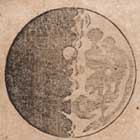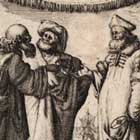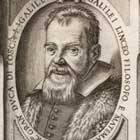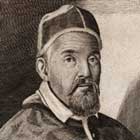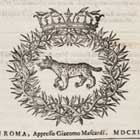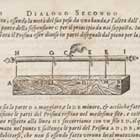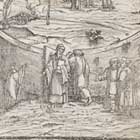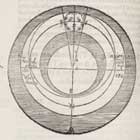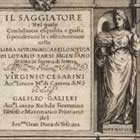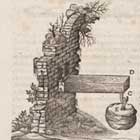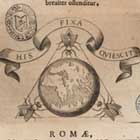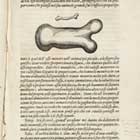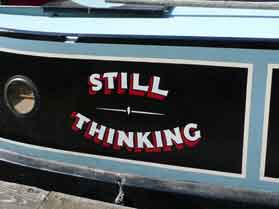 I spend part of each week on a narrowboat called “Still Thinking”. The name is an accident – the original owners of the boat kept telling the boatbuilder that they were “still thinking” when he asked them what name to paint on the boat, and eventually he lost patience and named it “Still Thinking”. It is not an ideal name as it is often misheard as “Still Sinking”. But I hope that readers of my work will think it appropriate.
I spend part of each week on a narrowboat called “Still Thinking”. The name is an accident – the original owners of the boat kept telling the boatbuilder that they were “still thinking” when he asked them what name to paint on the boat, and eventually he lost patience and named it “Still Thinking”. It is not an ideal name as it is often misheard as “Still Sinking”. But I hope that readers of my work will think it appropriate.
If you want to understand my book on Galileo it is helpful to have three books in mind. The first is Lucien Febvre's The Problem of Unbelief in the Sixteenth Century, first published in French in 1942 (you can find the French text here). Febvre argued that there was no real unbelief in the Renaissance, and around the time I read Febvre I came across some notes by the Venetian theologian and historian Paolo Sarpi which seemed to me marvellous evidence that Febvre was wrong – this led to my first book, Paolo Sarpi: Between Renaissance and Enlightenment, and half a dozen essays and articles on early modern unbelief. When I delivered Sarpi to the press it was sent out to a referee (Richard Tuck, I feel sure) who said that this was really the first volume of a two volume work, and I should wait until I had written volume two, which would be a general discussion of early modern unbelief. I was too impatient to take this advice (Sarpi had taken ten years) but Galileo is in a sense a companion volume to Sarpi – Sarpi and Galileo were for a time close friends, and they faced similar problems when it came to expressing their views in public. They were both prepared to face dangers for their convictions, and I think their views on religion had much more in common than is generally realised.
The second is Pietro Redondi's Galileo Heretic, first published in 1983. Redondi's book was based on a new document that the keepers of the Vatican archives had allowed him to see by mistake – an accusation charging Galileo with the heresy of denying transubstantiation, the turning of bread and wine into the body and blood of Christ in the Mass. I read that book as soon as it appeared in English, and it raised all sorts of questions that intrigued me. At the time I had taken a break from Italian history – partly because I was working in Canada, and the libraries I had access to weren't very strong, and partly because I was working on the intellectual origins of democracy. But I knew then that the question of what Galileo really believed, and why he fell out with the Church authorities, was one that I wanted to return to.
The third is a book from the same period, Shapin and Schaffer's Leviathan and the Air Pump, although I didn't get round to reading this until some years later. Leviathan and the Air Pump is a critical assessment of the standard claim that scientists discovers truths about nature through experiment. Like every one, I found that book provoking and intriguing, and it was in the forefront of my mind, because I used to use it regularly for teaching, when I found myself writing – more or less by chance – a book on the history of medicine, Bad Medicine: Doctors Doing Harm Since Hippocrates (2006). (I say more or less by chance because I offered Oxford University Press a book to be entitled A Short History of the Mind. My wife thought this a rather tedious project, and said “Tell them when you have finished the mind you will do the body”, so I added this as a postscript to the proposal. Back came an email “Mind rejected, body accepted” and I found myself writing Bad Medicine.) One of the central arguments of that book is that if we are going to understand the history of science we have to take progress seriously – here I follow Kuhn, and stand in opposition to much later history of science.
Bad Medicine turned me into an historian of science and that meant that Galileo was now the perfect subject for me, bringing together my interests in Renaissance Italy, heresy and unbelief, and scientific progress. Of the books I read while writing it, one in particular stands out: Edward Muir's The Culture Wars of the Late Renaissance (2007), which I recommend to anyone who wants to understand the world in which Galileo lived.
Now Galileo is finished, I'm working on a major study of the Scientific Revolution – a book about the invention of progress in the sciences. It's going to be an interesting project!
I hope this helps explain the sources of Galileo. As for me, my parents were Christian missionaries, and I spent my early years in Pakistan (my love of boats goes back to travelling from England to Pakistan and back by boat). I spent 1969 in France and Italy on a scholarship (the Captain F. G. Boot scholarship of the Cutlers' Company of the City of London – thank you Captain Boot!), which meant that I read Foucault and other newly fashionable thinkers before I went to university. I studied in Cambridge (where I was taught by a leading right-wing historian, Maurice Cowling, and went to Quentin Skinner's lectures) and at Oxford (where I was supervised by Hugh Trevor-Roper). I spent fifteen years teaching in Canada, ending up, happily, in Victoria B.C (where I first read Stephen Greenblatt). And I've been in York since 2004.

David's dog Bruno, named after Giordano Bruno. Photograph © Sarah Lee, 2008.
You can learn more about me from this interview with John Crace.
You can download a list of publications here.
For more information about Bad Medicine see here.
For my page at the University of York see here.
You can hear me on various programmes on BBC Radio 4's In Our Time. There's a list here.
And (should you really want to) you can see me giving a lecture here.

